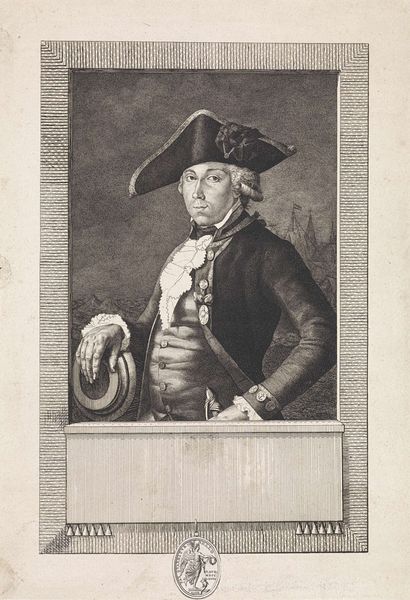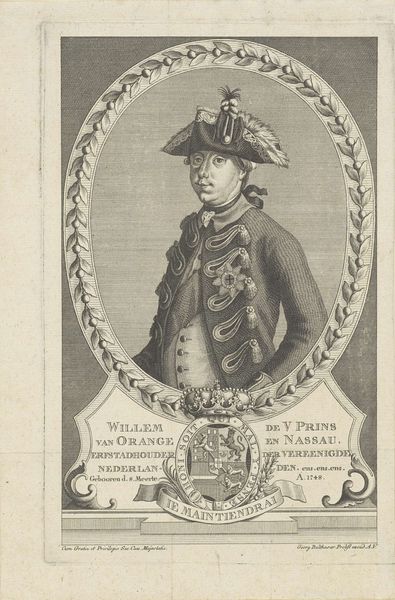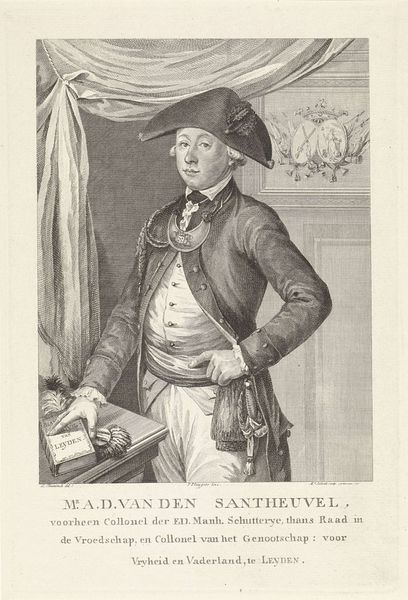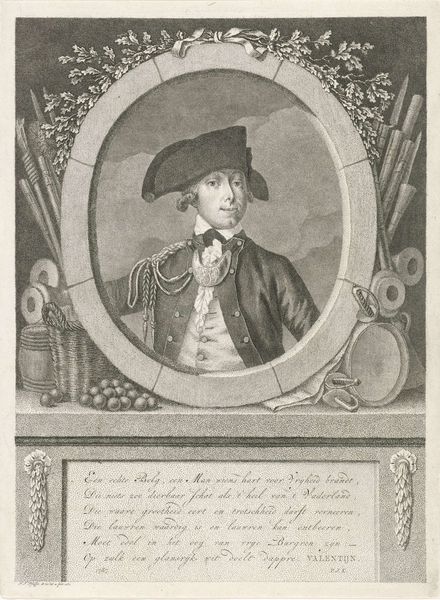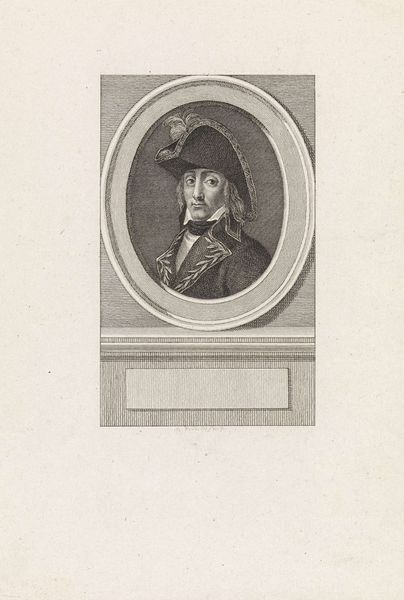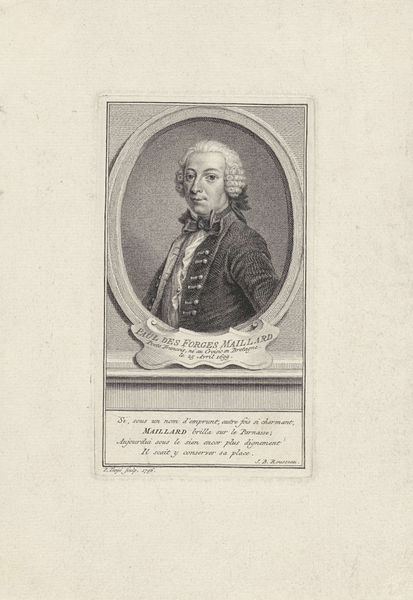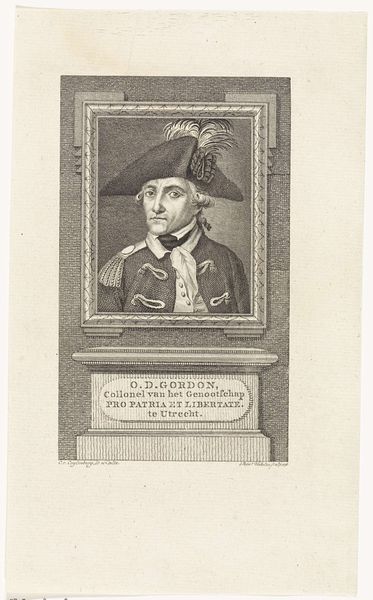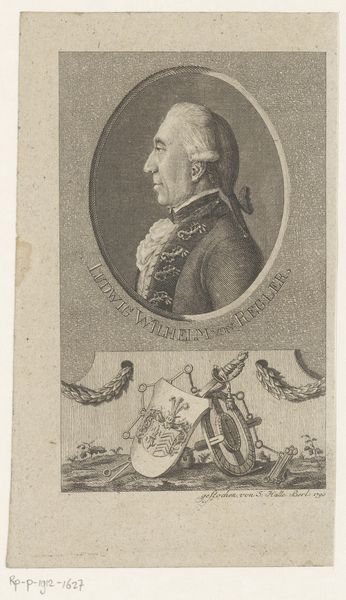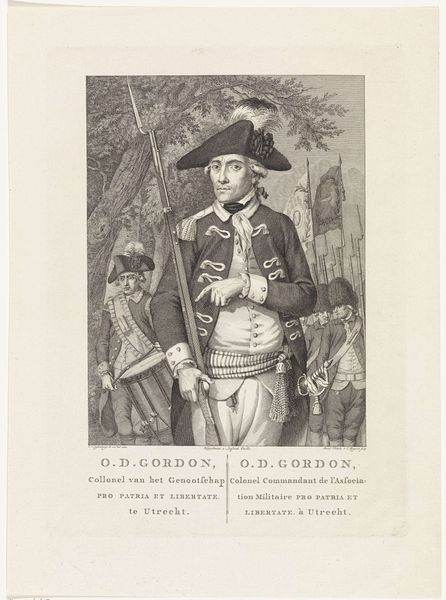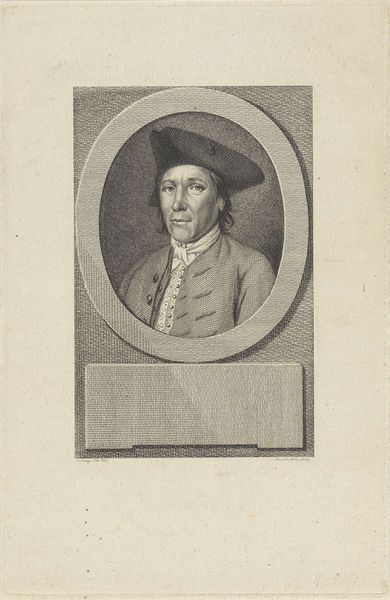
Dimensions: height 352 mm, width 238 mm
Copyright: Rijks Museum: Open Domain
Curator: Before us is "Portret van luitenant Pieter van Aardenburg" dating back to 1791, currently held at the Rijksmuseum. The artist behind this engraving is Jan Gerard Waldorp. Editor: The meticulous detail, particularly in his gaze and uniform, creates an immediate sense of stoicism. It seems both formal and confrontational. Curator: Indeed, Waldorp captures a certain severity fitting for a naval lieutenant. Pieter van Aardenburg, as the inscription states, served as First Lieutenant on the Kotter de Spion near Gorkum. Editor: That contextual note is critical. Military portraiture often operates as a form of valorization, but to what extent is the imagery rooted in tangible history? We should question who gets remembered and the means through which historical legacies get established. Curator: Engravings like these, circulated widely, undoubtedly helped shape public perceptions of military figures. Consider how Van Aardenburg is posed, his hand resting confidently upon what appears to be the helm, embodying leadership and maritime power. Editor: And what of that backdrop? It hints at the sea and the distant ship – a stage-setting for masculine exploits, emphasizing bravery and patriotic duty while also obscuring potentially grim realities. Does it romanticize naval engagement? What of the social costs, the lives lost at sea? These omissions matter. Curator: The style itself seems to nod back toward the Baroque, albeit a somewhat restrained version. This could be seen as linking him with the legacy of the Dutch Republic, framing his service as part of a longer tradition of national pride and martial achievement. Editor: Still, these representations also serve as visual cues to understand how notions of national identity, duty, and sacrifice were constructed. Works such as this provide an opening for reflecting on how they have been manipulated across time. Curator: Examining the socio-political conditions surrounding its production allows us to ask necessary questions. It reveals not just Van Aardenburg’s story, but the social and political values of the Dutch Republic. Editor: And as we interrogate such imagery, we inevitably question those narratives. What a rich artwork to contemplate!
Comments
No comments
Be the first to comment and join the conversation on the ultimate creative platform.
